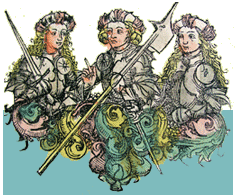on Pétrouchka
from Sunday, June29th of the year2008.
The Times of London asked me to write a short article about a song that was, for one point, the soundtrack to my life. The result is printed here, or, reprinted below.
The main struggle my teachers had with me was making me learn large-scale structure: you start at the beginning, you undergo a series of controlled transformations, climax, then bring it home to the barn. Stravinsky’s 1911 ballet Pétrouchka, as a narrative, is a fragmented procession of episodes inside a Russian country fair: a perfect vehicle to show off the different stuff that Stravinsky could, as a composer, perfectly execute, all the while resisting traditional (19th-century) structures. Think of a meal that is made up of 16 small dishes, rather than the meat and two veg to which we are all accustomed.
I first bought a CD of Pétrouchka in 1994; and, with it, the cheap and old-fashioned Dover edition of the score. Spotty and awkward, I spent hours on the floor of my parents’ house, obsessively studying the details of each episode. That modal melody a few minutes into the piece is played on cellos, way too high for their normal comfort zone, which is why it sounds like an accordion. The second large part begins with an explicitly flatulent contrabassoon. Sassy? Inappropriate?
I pressed my nose into those orchestrational decisions: a little flourish with English horn, celesta and some bizarre subcommittee of the second violins plucking three notes sent a shiver down my spine. The details of the score seemed more important to me than whatever the overall structure might be.
I listened and ignored the primary melodic material. What’s left is a latticework of patterns, detailed and repetitive, energetic from the distance of 60ft away in a concert hall, but pornographically mesmerising with a score in the hand and the volume knob turned up dangerously high. In my most narcissistic moments, I like to imagine some 14-year-old kid sitting on her floor in Russia, blissing out on the pointillistic bumps and grinds I constructed in a cabin in Vermont.
This isn’t to say that Stravinsky’s orchestration was the only thing that appealed to me; I began learning the piano reduction, which allowed me to prolong my repetitive obsessions. In the Danse Russe of the first tableau, a bassline walks down a fourth, then a fifth “” you hear this in Abba, you hear it in Beethoven.
A circular rhythm machine of oboe and bassoon twitters, and the bass comes in again. This time, though, it doesn’t hit the money note, but a terrifying, disorienting, evil f-natural. The oboe doesn’t care, and starts up the food processor again, merrily chirping along. The bassline comes back and plays the “good” note again. It’s a perfect cycle.
Not only does Stravinsky ignore the romantic notion of a small motive blossoming into a whole narrative, his material is already self-contained and self-realised, like the greatest and simplest folk art: the garland, the braid, the wreath, the woodcarving of a serpent devouring its own tail.
For most of my adolescence, I could only think about this kind of music, and it is still the music to which I return with the most familiar kind of relationship. Put on a recording of Pétrouchka and I’ll be there, even rooms away, swaying with the big rhythms and twitching with the small, seeing the notation swirl around my face like a cloud of birds.

6 Comments
June 29th, 2008 at 10:44 am
gorgeous description of gorgeous music. jellied eel for ears.
June 29th, 2008 at 11:02 am
Thanks for posting about Petrouchka…haven’t listened to it in years, and need to do that soon.
Here is a cool clip of Pierre Monteux (who did the premiere for Diaghilev) conducting People’s Fair—he makes it sound so slippery and easy….an eelish interpretation, maybe.
http://www.youtube.com/watch?v=L4z6HOhe3Yo
June 29th, 2008 at 1:01 pm
I listened to it this morning before I found this lovely surprise.
Your words perfectly describe it…and I find myself gazing at my Dover score I found for $5.99.
Thanks.
June 29th, 2008 at 1:06 pm
…..not to mention the concertante piano is insanely fun to play….although the celesta part is appalling short if not being played by a percussionist (but you get a front row seat for the rest of the piece).
July 6th, 2008 at 11:50 pm
Howells, who also resisted large-scale structures, loved this work and knew it intimately. Anyone who is interested in his analytic comments (mostly concerning orchestration) can–I think–examine his copy of the 1911 score at the library of the Royal College of Music in London.
July 8th, 2008 at 1:12 am
Interesting note on the the ‘flatuent’ basoons. Reading Stravinsky’s 1936 autobiography, he states that one of his earliest memories of sound was a peasant who:
_”…pressing the palm of his right hand under his left armpit, he would work his left arm with a rapid movement, making it press on the right hand. From beneath the red shirt he extracted a succession of sounds which were somewhat dubious but very rhythmic, and which might be euphemistically described as resounding kisses. This amused me beyond words…”_
Ha! I had a good laugh off of that 🙂